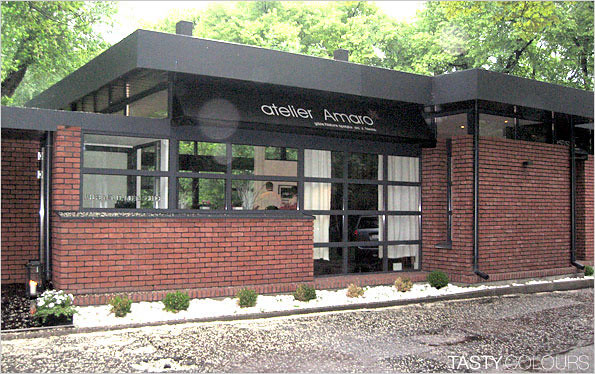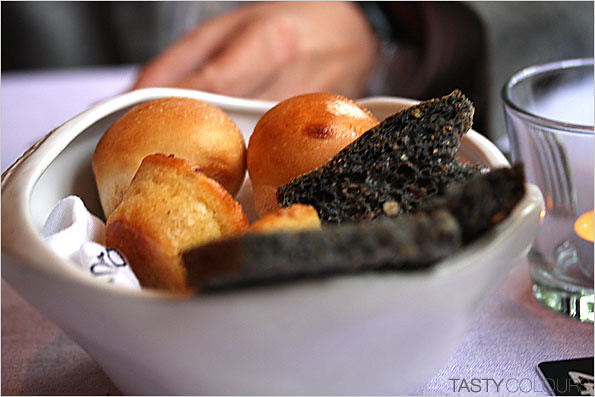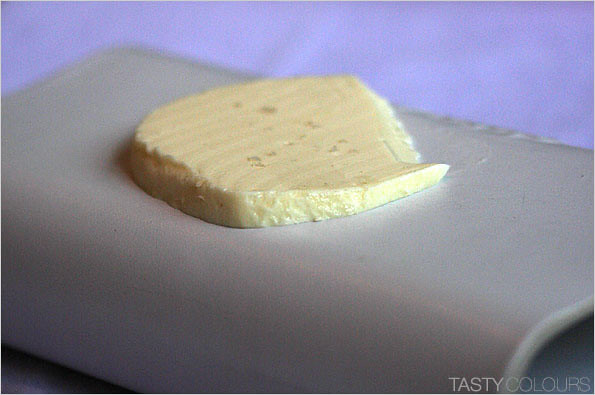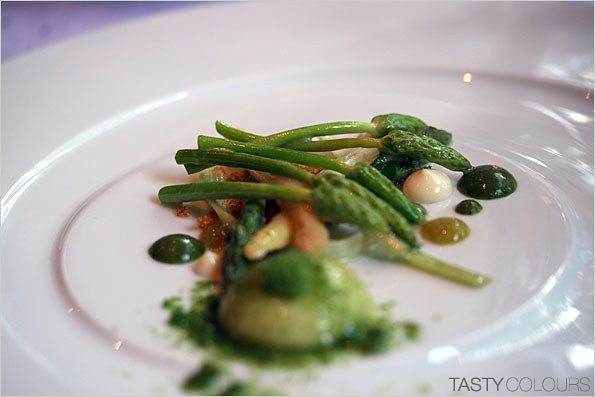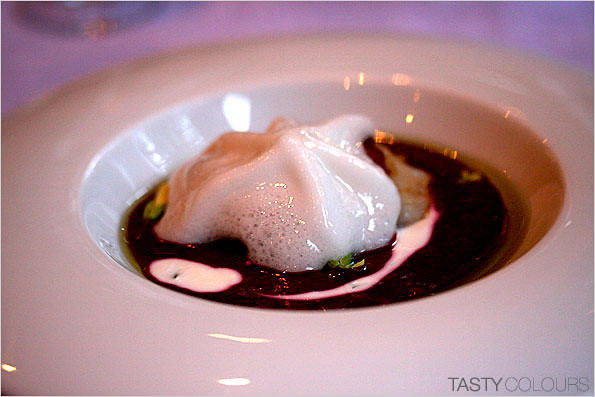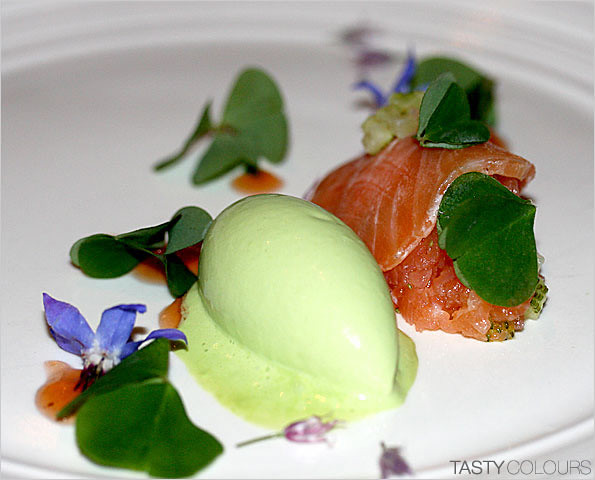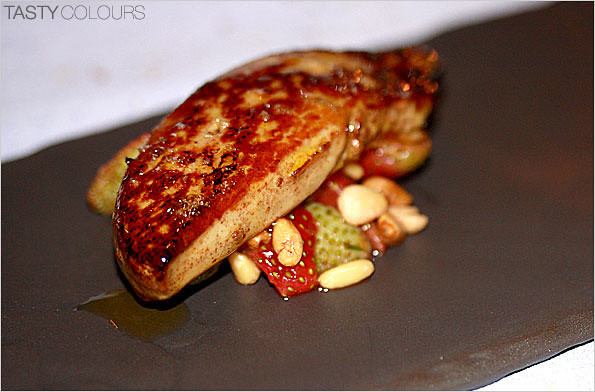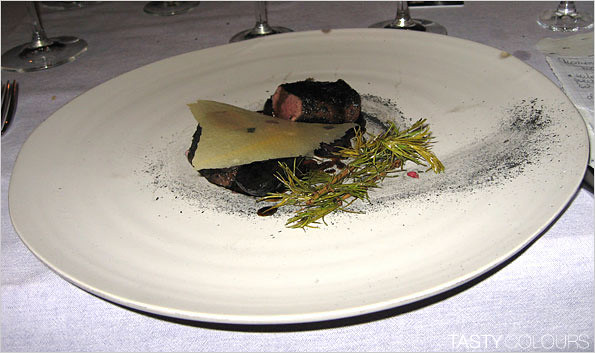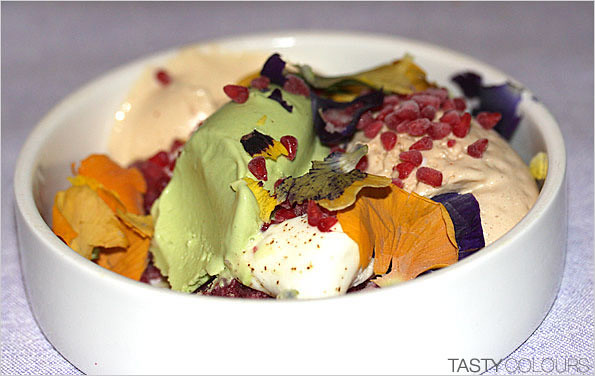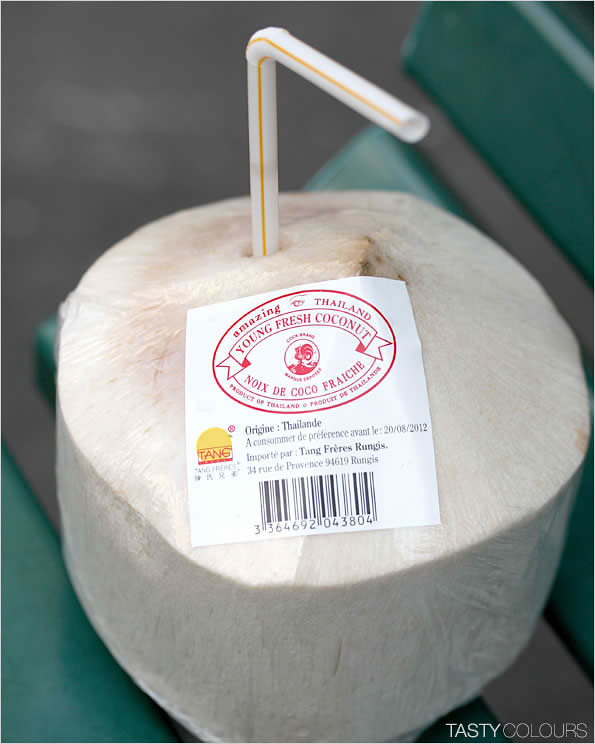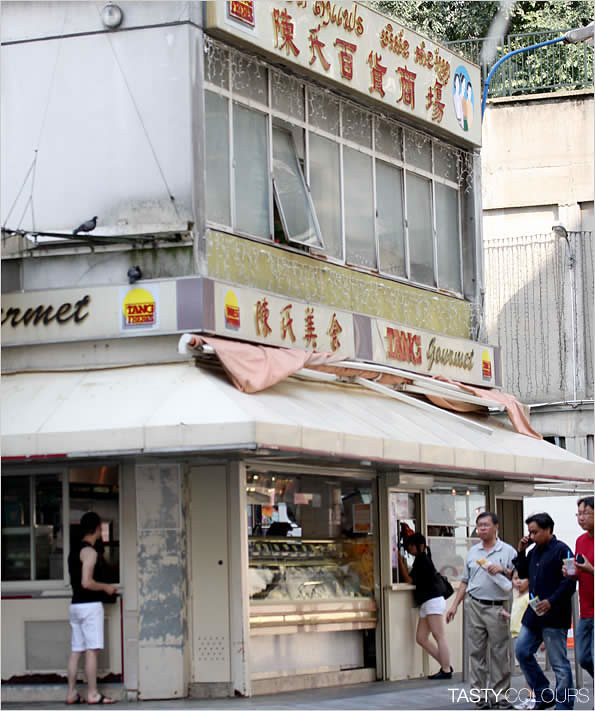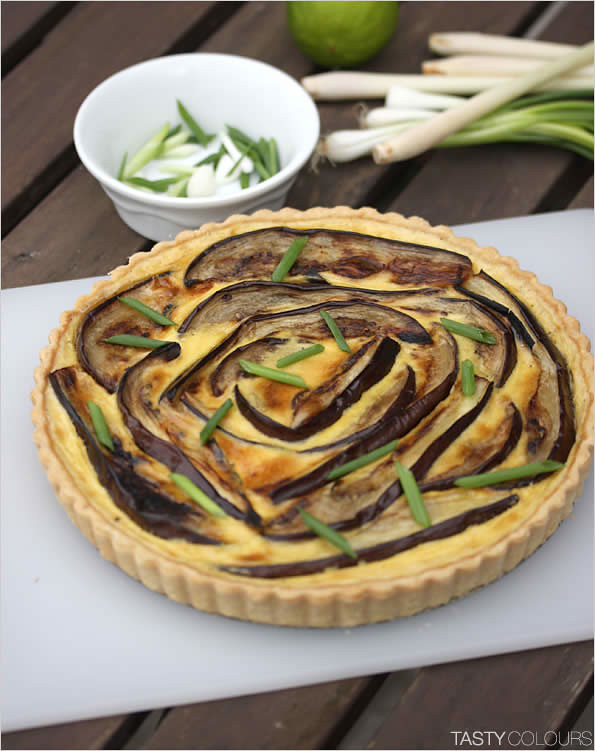In his
interview given to ABC NightLine in 2010 – ReneRedzepi from the Danish restaurant NOMA told: “I do
not want to preach anything, but probably the next big cuisine will be in
Poland or wherever, you know, and most people there laugh a little bit when you
say Poland. But 10 years ago, people would laugh if somebody said Denmark”.
And I am of the opinion, since at least few years, that Polish (or Slavic) cuisine
and its culinary traditions will be trendy in the culinary world within a few
years.
More than
two years ago, exactly in May 2010 I mentioned to you the name of the Polish chef who will probably gain a first
Michelin star for Polish restaurant – Wojciech
Modest Amaro.
Wojciech
Modest Amaro is one of the most renowned Polish chefs, but he is not very well
known to the general public and he does not appear often on TV (on the
contrary, quite rarely actually). He is also far away from a certain circle of people
who build their celebrity thanks to marriages with powerful private TV stations
like, for example, Magda Gessler. The latter, who is not at all a chef, is the owner of several restaurants and,
due to her overexposure, is recognized by the general public as the most renowned
chef in Poland…
The Polish dream
to obtain a first Michelin star in our country probably will come true this year
or the next one. In 2011 Amaro opened his restaurant in Warszawa and already, only
after a few months of activity, received a "Michelin Rising Star” (the only one in Poland so far, unfortunately).
If he continues to develop, we will have
the first Michelin star restaurant in Poland – more than 20 years after the
collapse of communism. As far as I know, preparation for the opening of the
restaurant lasted for over one year.
I visited
the restaurant at the end of May, together with my father (we celebrated his
birthday and my name day).
Atelier
Amaro is located in Warszawa, in the Agrykola park, on the way from a coffee
shop “Na rozdrożu” to the Ujazdowski Castle.
It has been
established in a small, one floor building. It is hard to believe, as my dad
says (and fathers always have to be right) that this building is an ex public toilet.
Such a place, meaning the public toilet converted into a restaurant, must be
metaphorically and literally speaking – an exceptional place.
In Atelier
Amaro you will not find a regular restaurant menu, which, in Poland, is often written
with an infantile and pretentious language. Instead one will find a tasting
menu. The dishes served there are called “moments”.
Amaro assures that those “moments” change every day. This is something I cannot
confirm since I ate there only once so far. One may dislike this type of menu
and food. One has the right not to like how the food is presented in Amaro’s
restaurant. However, one must admit that nearly every such moment is a tiny
masterpiece having its three leitmotivs.
Atelier is
not a big restaurant: just around 10 tables may only accommodate between 40 to 50
people. The interior, in neutral colors, is rather simple and has an
unconstrained elegance in Scandinavian style design. In place of regular wooden
chairs, soft and comfortable armchairs. In place of common fake and kitschy
paintings (often met in Polish restaurants) – modest simplicity for the interior
design. We sat down with my Dad at a table by the window, through which we
could admire the view over the murmuring, fresh, spring verdure of Agrykola. We
felt a little bit like in the middle of a forest.
We chose the
tasting menu entitled “8 moments” (8
mini dishes). The sommelier suggested to order (instead of wine) a selection of exceptional, outstanding
Polish vodkas and hard liquors. Some of them, as we were told, are even
made especially for Amaro’s restaurant. This choice was not very good, in my
opinion. Not because the alcohols were not good (on the contrary they were of
top quality) but just because, despite the fact that I am Polish, I am not used
to drinking strong alcohols with food. Those liquors and vodkas were delicious
and extraordinary, but one should remember that they are strong alcohols. Once
they are mixed with the creative and light food with molecular touches, they unfortunately
do not create a perfect duet. On the other hand, we had the impression that
some of them were too sweet. Not to
mention that the tasting of seven or eight strong vodkas probably will not do
anything well to your stomach. For
Amaro’s cuisine is poor in grease and carbohydrates, meaning two basic
ingredients, in which Polish liquors and vodkas love to swim in. So, I am of the opinion, and my father agrees
with me, that a restaurant serving such posh and delicate dishes should
definitely offer a selection of great wines even if it was breaking the rule
that everything served at Atelier should be Polish (which is not entirely true,
as you will see below).
Firstly we
were served three tiny appetizers. The first one (I am sorry, I did not take any
picture of it) was mint ice cream in
the shape of lollipops made in liquid nitrogen. The second one was a light and airy celeriac spuma served with a crispy rhubarb stick coated with sugar.
The third one was a delicate foie gras
parfait accompanied by a flower of
acacia in tempura. That was an interesting experience although I had the
impression that the tempura batter was slightly too heavy. But maybe my palate
was heavy on that day, who knows. The
appetizers were accompanied by liquors made by the renowned Mr. Karol Majewski from Łomianki, an
outstanding producer of extraordinary, traditional alcohols. The one that we
tried was made from pine sprouts. It
had a strong pine aftertaste; however in our opinion it was too sweet,
therefore the bitter-acrid pine aroma was over shaded. The three tiny
appetizers were also accompanied by little baskets of brilliant bread slices and
rolls, including Amaro’s already famous
bread made with burnt organic hay. The latter was very Polish in taste,
meaning that the aroma resembled the smell of grasses burnt in Polish fields in
the countryside.
Unfortunately,
the quality of the butter served to us could not even compare to the quality of
bread. I love butter and I am a butter expert as my cuisine is mostly based on
butter. Unfortunately the taste and the
quality of the butter that was served at Atelier Amaro did not vary from the
taste and quality of any butter that one can buy from a grocery store around
the corner (and maybe even was such).
This was a little disappointment for us, however in the light of great
bread and delicious bread rolls it was an element that was not essential
(although, you know – freshly made farmers butter may be really stunning in
taste).
The service
in Atelier Amaro is fully professional. Quick, amiable but not insolent. Both
our sommelier and waiter were answering our numerous questions pertaining to
the alcohols and the dishes served, including the techniques used for their
preparation, thoroughly and profoundly. No
single question was ignored. The unquestionable great moment of our dinner was our
conversation with chef Wojciech Amaro who suddenly appeared at our table, sat
down and had a chat with us for around ten minutes.
First moment
Asparagus / pine /
bursztyn (amber)*
The first tasting dish that was served to us was a fresh, spring asparagus
salad comprising of crispy wild asparagus, asparagus gel, asparagus spuma
and asparagus-pine granite. Everything was accompanied by mini-blots of
mayonnaise. The vegetables were crispy and the dish was perfectly composed with
simplicity. Never before in my life have I tried wild asparagus and I probably
will not eat them again in a near future, if Mr. Amaro does not disclose his
secret about where to collect them. The aroma of pine was also well present,
but not insolent.
On the contrary,
the third motive, the amber “bursztyn” touch was absent. (“bursztyn” (literally
meaning “amber”) is a Polish aged (6, 8 and 12 months) hard cheese made from
cow milk).
Second moment
Botwinka (red chard -
young beets) / verbena / St. Jacques
Before the second dish
from the tasting menu was served to us, the sommelier poured the refined,
earthy-like and strong potato vodka Vestal
Kaszebe 2009. As far as I remember, this vodka was manufactured by PolmosSiedlce from potatoes planted in the Kashubia region in the north of Poland.
Vestel Kashebe vodka has been acknowledged as one of the Worlds’ best vodkas
(according to the vodka classification being the equivalent of Parker’s
classification for wines and got the maximum points for strong alcohols). The vodka was produced in limited quantities (according
to what I found out on the web, 5 thousand bottles are produced each year).
The leitmotivs of the second
moment of feast were young beets and St. Jacques. This dish was a kind of soup.
Its texture resembled thick cream. It was made out of young beets and verbena,
accompanied by one perfectly fried St. Jacques. The whole dish was decorated
with a light horseradish-yoghurt spuma and blooming flowers of arugula. I can summarize
that the taste of arugula flowers is the quintessence of the peppery taste of
this weed. However, the most explicit taste was…strawberries. I asked the
waiter whether I was right and he actually confirmed that strawberries were
used in the preparation of the soup. The only issue I can complain about is
that strawberries over dominated the beets to the extent that only the color of
the soup reminded me that it was made out of beets. All in all the composition of
the dish was delicious.
Third moment
Sweet bread / topinambour /
cep
Before the third
moment was served to us, we tasted a liquor called “four seasons”, composed of alcohol, of course, lemon and, as I was
assured by our sommelier, the only 3.8%
fat milk in Poland. Have you ever heard about such milk? I have not.
The main ingredient of
the third moment was one of my favorite: veal
sweetbreads. Do you like them? I simply love them. Because sweetbreads are
extremely difficult to buy in Poland (and, on the other hand, they are awfully
expensive in France) I never think twice to order them whenever I can find them
in a restaurant. Those sweetbreads
served in Atelier Amaro were accompanied by a forgotten (at least by European culinary
culture) and ancient vegetable called topinambour
(Jerusalem artichoke). This topinambour was served in several presentations
such as: a delicate purée, a panna
cotta and a tiny soufflé. The pair
topinambour/sweetbreads was accompanied by a cep tartar,
which had a slight acid aftertaste, which was presented over an edible soil. Here, at Atelier Amaro the soil was made from forest
mushrooms. Unfortunately, as it was served in such a miniscule amount, one
could barely notice the taste of the mushrooms. However, the sweetbreads were
extraordinary and delicate, so the whole dish was perfectly balanced.
Once the last bite
swallowed, our skilful sommelier poured two small glasses of liquor made from chaenomeles (wild quince) which was made upon a
special order of Atelier.
Fourth moment
Trout / chives / rhubarb
I remember that the
fourth moment had a good reason to be cold: it was a trout and green strawberries
tartar topped with thin slices of trout. The fish itself was tasty and the common wood sorrel leaves that
accompanied it had a surprising flavor. On the other hand, I still question the
benefit of the green (meaning not ripe) strawberries addition. This cold (in
the energetic sense) dish was supplemented by savory chive ice cream, flowers of starflower and chive flowers.
At this point of the
tasting, and after sipping so many strong liquors, I could feel a bit tipsy.
Well, I was lucky that I could have some more bread with hay ash and drink
mineral water to become sober again! Nevertheless, I could not sense the
rhubarb tone in that dish.
Fifth moment
Foie gras / Strawberry /
Juniper berry
This dish,
non humanitarian in a certain sense, is, again what I like. I love, from time
to time, to delight my palate with some tasty, yummy foie gras. I have heard
that, supposedly, somewhere in the Pyrenées Mountains lives a Spanish guy who
feeds up his geese in the open air. Those geese are fed with natural methods,
meaning that they eat what they find outside – acorns or stuff like that. I also
have heard that a renowned Michelin Star French chef criticized the Spanish
foie gras. His opinion even was that the latter was a profanation of the French
one and that it did not have much to do with the authentic French foie
gras. At the same time he was making
faces like chef Gordon Ramsay does, in a TV show that I will not mention here.
When
I eat foie gras, I like to break its taste with some sweet preserves, either onion,
either figs, cranberries or even Polish berries. This foie gras that I had in
Atelier Amaro was perfectly fried. It was delicious. It was covered with a sweet spruce syrup glaze. That was an
interesting flavor, but I had the impression that the glaze had not been applied
evenly. As a result, some bites of foie gras were dominated by the syrup, which
on the contrary you could not taste at all in other bites. As underlined by the
waiter, this foie gras was accompanied by strawberry chutney. Excuse me, but it
was not chutney but just chopped green and red strawberries in the aroma of
spruce and pine nuts. Here I have to complain a bit. We visited Atelier Amaro
at the end of May, and therefore much before the strawberry season in Poland.
Not surprisingly, why the strawberries served at Atelier, for sure imported,
had nothing to do with the exquisite taste of great Polish strawberries picked
up in the season (will you believe that
Poland is one of the largest producers and exporters in the world?). Strawberries picked out of the season are just not
good and that’s it.
To sweeten the bitter
taste of unripe strawberries, the waiter poured “golden rose” vodka in our
glasses.
Sixth Moment
Sea bream / Morels / Scallion
The
Sixth Moment started with the tasting of a single distilled wheat vodka with vanilla aroma produced by the
Chopin Distillery. While I was trying to hide my burping
provoked by strong vanilla aroma, our waiter arrived with a plate with sea bream fillet, accompanied by an asparagus jelly and morel mushrooms in
absolutely miniscule amount, a leaf of tilia
(basswood, a typical Polish tree), olive
oil “caviar”, fava beans, green baby peas and cherries (although it was not
the season for that fruit)…..Attention! The list is not finished: well,
accompanied also by green apple and green pea spuma, and a little fennel sauce,
and pea sprouts. Every little bit tasted great, but it was a pity that I was
the only one to be served the morels and the asparagus jelly. It appeared that
my dad’s plate was missing those essential ingredients. Did the cooks make a
mistake? Our waiter acknowledged the omission and politely apologized for it by
admitting that this was bound to happen with such a complicated cooking… However, he did not propose to send the plate
back to the kitchen and have it replaced by a complete one. My father, a morel
expert, remained unhappy. Fortunately, the fillets (despite the fact that they released
a bit of juice) had a perfectly fried and crispy skin and it was all delicious.
Two types of potato
vodkas were poured into our glasses while eating the fish: the first one – a single
distilled vodka made from baby potatoes harvested in June 2010 (the producer:
Polmos Siedlce) which taste was surprisingly sweetish, with a light litchi
aftertaste and the second one, served right away so we could compare their flavors,
was made from older, autumn potatoes (2010 harvest) which flavor reminded the
smell of an old cellar.
Seventh Moment
Venison / Blueberries / Larch
The
last savory moment of the evening was roe
deer meat prepared sous-vide
(forgive me that I forgot to ask how much cooking time this method implied),
served with hay corn “coffee”. Just
in case, we ordered a glass of wine for each of us, so our stomachs could rest
a bit from the hard liquor. The meat was accompanied by one potato chip, as thin as a parchment and
of a strange, cellulose-like structure. It
was also served with typical Polish forest fruits such as lingonberries, wild
strawberries, blackberries as well as shallots, all this aromatized by larch. The deer meat was soft and at
the same time pink inside. However, I was told that the fruits used to prepare the
dish were frozen ones, which was not surprising, because they were not in
season at that time. The whole dish was served with ashes made of the
aforementioned ecological hay and purple, wild carrot. My dish was served on a
plate that was chipped. Albeit I did not pay so much attention to this kind of
small details, I must say that a Michelin guide inspector would most likely notice
it and point it out.
Right
before dessert we could taste a great
chocolate liquor, the Wedel,
combination based on Chopin rye vodka.
Eighth Moment
Strawberry / bilberry /
raspberry
The name
of the eighth and last moment could suggest that strawberries, bilberries and
raspberries were the leitmotivs of this dessert at Atelier Amaro. Here, the
leitmotivs however were, in my opinion, three types of ice creams: pine, almond and juniper, all of them of a strong,
savory flavor. The ice creams were accompanied by yogurt, strawberry confit,
sponge cake with a mousse made of certain flowers (I do not remember which
ones, because I did not have enough time to make notes). The raspberries were
frozen in liquid nitrite and served with petals
of edible flowers. It was quite a savory, not
sweet, dessert. Amateurs of sweets made of butter, chocolate, eggs and cream
will probably be disappointed. As to me, my family and friends know that my
favorite dessert is pickled mushrooms. I
therefore was quite happy to taste such savory ice creams.
What should be the
conclusion of this experience? All dishes served to us were more or less
perfectly prepared as regards their various culinary techniques. They were
presented in the style which is typical for that type of cooking. In the
culinary sense, a lot of them were somehow extraordinary and harmonious.
However, all in all, I remain a bit disoriented after that dinner. I came to
Warsaw and to Atelier Amaro convinced that this dinner would be a fun culinary experience.
On the other hand, I was expecting to discover Amaro’s own view of our Polish
culinary heritage. Actually, Amaro’s cooking is, as a matter of fact, a
cosmopolitan one, just very barely linked to Polish traditions. Mr. Amaro uses from
our heritage certain ingredients, aromas and flavors present two or even three hundred years ago, but, I am sorry to say that,
omits the past seventy years of our history. So, we will taste there flavors which
we can meet in Polish forests (pine, spruce, larch, juniper). We will taste
topinambour, which was popular in old times. But, how we will explain foie
gras, sea bream and St Jacques? These ingredients are not of Polish traditions.
So, to summarize, for me, the link between the past and the present was lacking….however,
I would love to go back there one day to taste ultramodern variations and
combinations of classical and traditional Polish cuisine. I sense that this
should be more difficult than to prepare horseradish spuma or chive ice cream.
To make a long story short, the dinner was perfect and delicious, but the
expected magic somehow disappeared. My dad’ impressions were analogous.
The price for the
dinner amounted to over PLN 1,200 zloties (approximately 400 Euros). The price
for the 8 moment menu is PLN 280 per person; the rest was for the selection of nalewkas,
wine, and mineral water. The bill included a 10 % additional charge for the
service.
The quality of pictures
presented in this post is worse than usual, but it is due to the “working
conditions” (it was already late, and not wanting to disturb the other guests, I
was not using the flash light).

